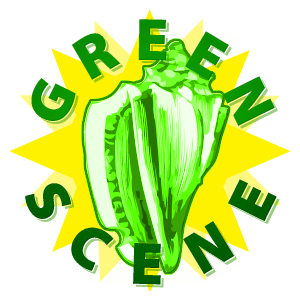Valerie Preziosi: Steward of Endangered Key Deer
Preziosi, an avid nature photographer who is dedicated to protecting and saving the endangered Key deer, is opening a new state-authorized Key deer rehabilitation facility on Big Pine Key.
In late December, Preziosi is opening a new state-authorized Key deer rehabilitation facility on Big Pine Key. The former 35-year critical care registered nurse is also an avid nature photographer.
A new Key deer rehabilitation facility is to provide care for orphaned fawns and medical assistance for injured Key deer. Photo: Valerie Preziosi
With a rehabilitation permit issued by the Florida Fish and Wildlife Conservation Commission, the care facility will be able to nurture orphaned baby fawns for up to 90 days. For adult Key deer, it will provide post-injury or illness treatment care for up to 60 days to prepare them for release.
"It's not a sanctuary for non-releasable Key deer, but a place to treat the ill, injured or orphaned animals and get them back into the wild," Preziosi said.
While it won’t be open to the public, the new facility is to provide webcam viewing and educational information on social media platforms.
Preziosi also organizes educational seminars and distributes education brochures outlining ways to protect the herd, such as not feeding them human food like pizza.
One quarter of a Key deer's healthy diet typically is from red mangrove, its leaves and stems, with the rest generated by 150 native Keys plants, Preziosi pointed out. The deer can swim up to 1.5 to 2 miles offshore to forage on native vegetation.
Preziosi and her scientist husband, Jan Svejkovsky, serve as president and treasurer, respectively, of the nonprofit Save Our Key Deer organization.
Save Our Key Deer conducts scientific research, including a study on the availability and seasonal variability of natural drinking water sources for Key deer. Findings reveal that many of the endangered species today are dependent on human sources of fresh water.
Keys Traveler: When did you first come to the Florida Keys and why?
Valerie Preziosi: In the late 1970s to dive into the beautiful reefs, enjoy the scenery, and experience the authentic island-style vibe. We moved to Big Pine Key permanently in 2015 from San Diego to live among the endangered Key deer and all the other unique wildlife that make the Keys a national treasure.
KT: What aspects of the Keys environment or way of life matter most to you?
VP: We love to hike, bike, and kayak in beautiful, pristine environments rich with wildlife.
KT: Who or what inspired you to become passionate about respecting and protecting the Keys' natural world?
VP: My mom took care of any ill or injured wildlife found in our New York neighborhood. She taught me about the importance of every living thing. Jan and I have traveled worldwide to remote locations to experience self-guided expeditions. All of our "vacations" have been backpacking or kayak-oriented.
KT: How does that passion influence your work or profession?
VP: We've dedicated our lives to advocating and caring for the endangered Key deer. This is our calling.
Preziosi uses her amazing Keys wildlife photographs on social media to educate and inspire the public to use care and caution when driving through endangered Key deer habitat. Photo: Valerie Preziosi
VP: I use my Keys wildlife photographs on social media to educate and inspire the public. We involve the community to participate in projects such as sign-making and outreach education booths. We also organize regular beach clean-ups to reduce the chances of entanglement (and injury or death) by the deer in ropes and plastic. We install self-supporting road signs warning motorists to slow down and place them alongside high-risk road areas during fawn season. We have evidence that these have helped avoid fawn deaths caused by cars.
KT: What keeps you energized, challenged, and focused on your path?
VP: Photographing our spectacular scenery and wildlife, and sharing that with residents and visitors.
KT: What do you hope your positive environmental actions will accomplish?
VP: To create a culture where we all understand the importance of a safe, clean habitat for Key deer and all of our wildlife.
KT: What message do you want your actions and example to communicate to people you encounter?
VP: It's not enough to love our wildlife and environment. You need to educate and inspire others, and to participate! It takes a village.
KT: What's your favorite natural or eco-friendly activity in the Keys?
VP: Getting outside to observe and photograph our unique wildlife while hiking or kayaking. Every time I step outside, I see something beautiful and amazing!





